Do you suffer from pain or unsightly bulging veins in your legs?
You may be dealing with varicose veins, or possibly spider veins, a rather common vascular condition that affects roughly 23% of American adults, or 33 million people.
In a recent television interview, Gabor Kovacs, M.D., F.A.C.S., a board-certified vascular and general surgeon joined First Coast Living host Casey DeSantis to talk about what varicose veins are, what causes them, and how they can be treated.
What Are Varicose Veins?
“Varicose veins are those enlarged veins that you can see on somebody’s leg that are usually bluish and tend to bulge and pucker up along the leg,” says Dr. Kovacs. “They usually extend from the thigh down to the ankle, or any part of the leg.”
Most varicose veins are unsightly, but if left untreated, they can lead to specific symptoms including:
- Heaviness in the legs
- Aches
- Pain
- Cramps
- Swelling
- At times restless leg syndrome
“Varicose veins can also give you some discoloration of the skin,” continues Dr. Kovacs. “And if it’s a really severe case, sometimes it can lead to ulceration of the skin, which is like a breakdown of the skin.”
What Causes Varicose Veins?
According to Dr. Kovacs, pregnancy predisposes individuals to varicose veins, but the main causes are usually either genetic or occupational.
“If your parents had varicose veins or any family member, you’re more likely to suffer from it,” says Dr. Kovacs. “There are also occupational causes. If you have a job where you spend a lot of time on your feet standing, that’s going to predispose you to develop varicose veins.”
.
Before and After Photos
(Slide the image horizontally)
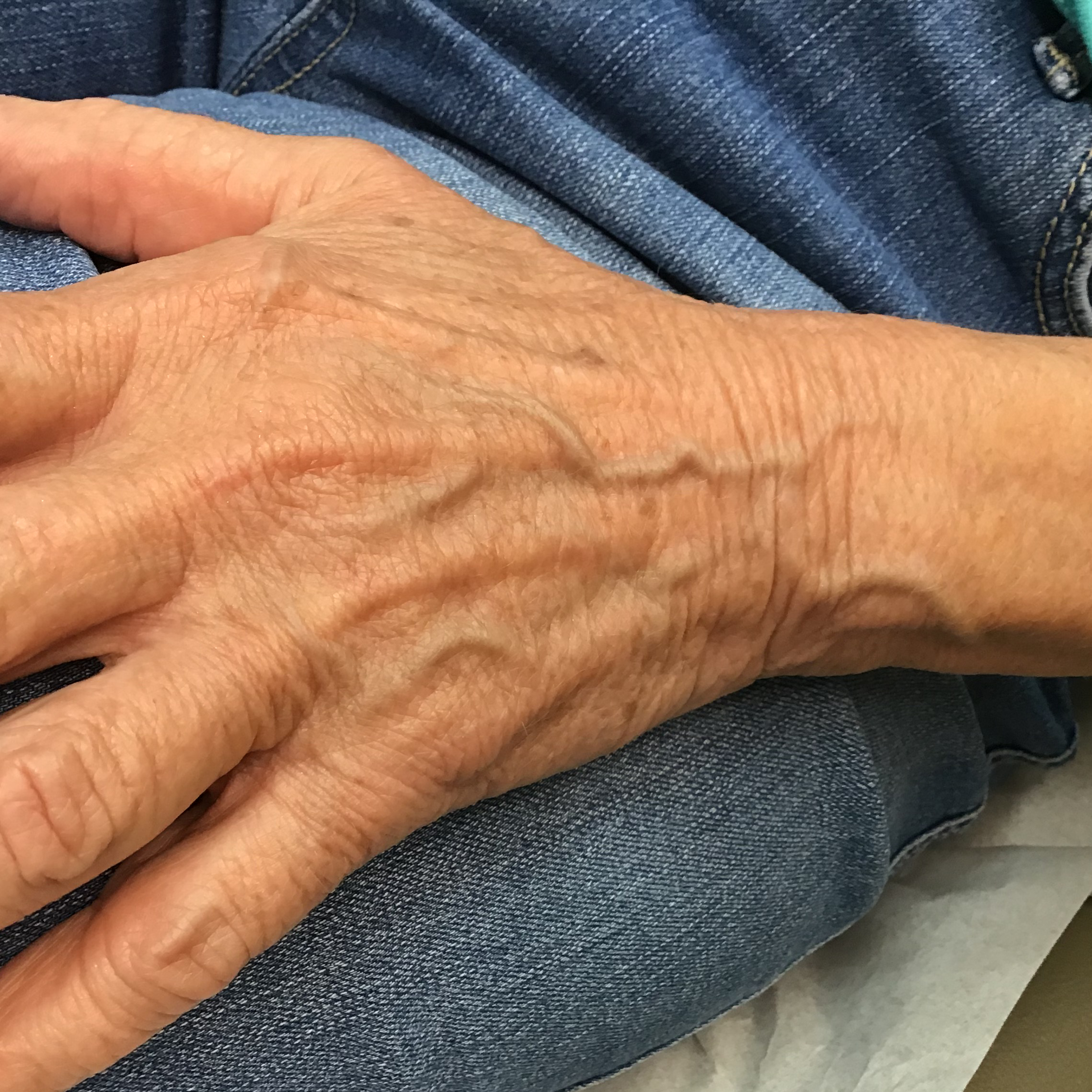
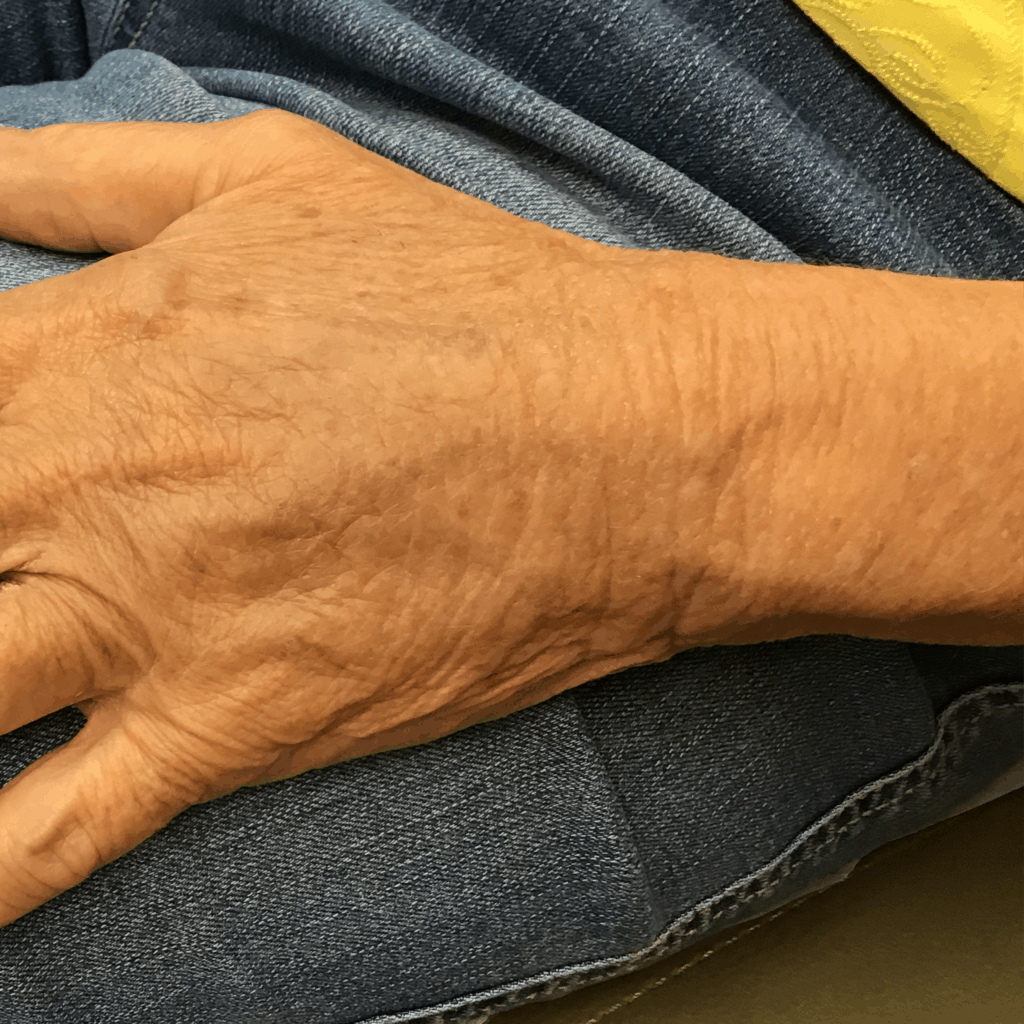
Watch this video to see the results of sclerotherapy in just seconds.
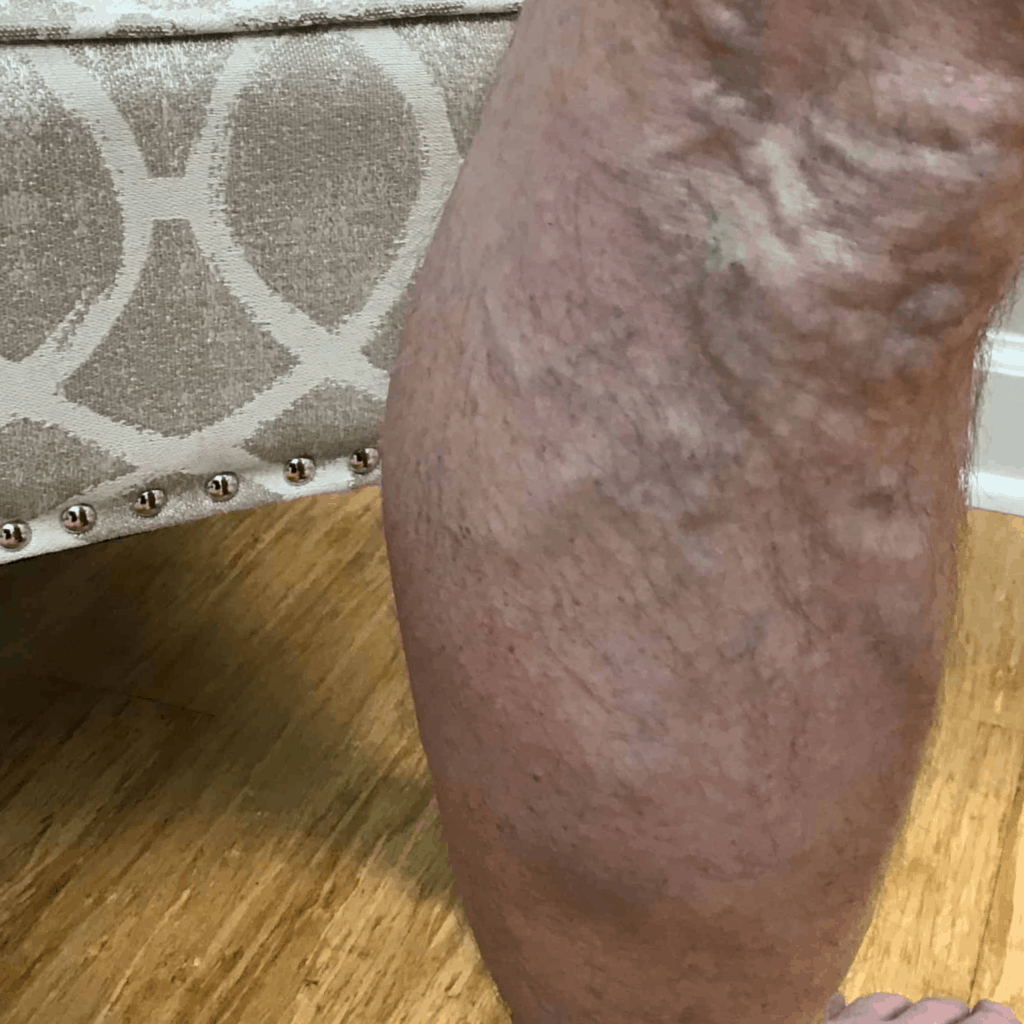
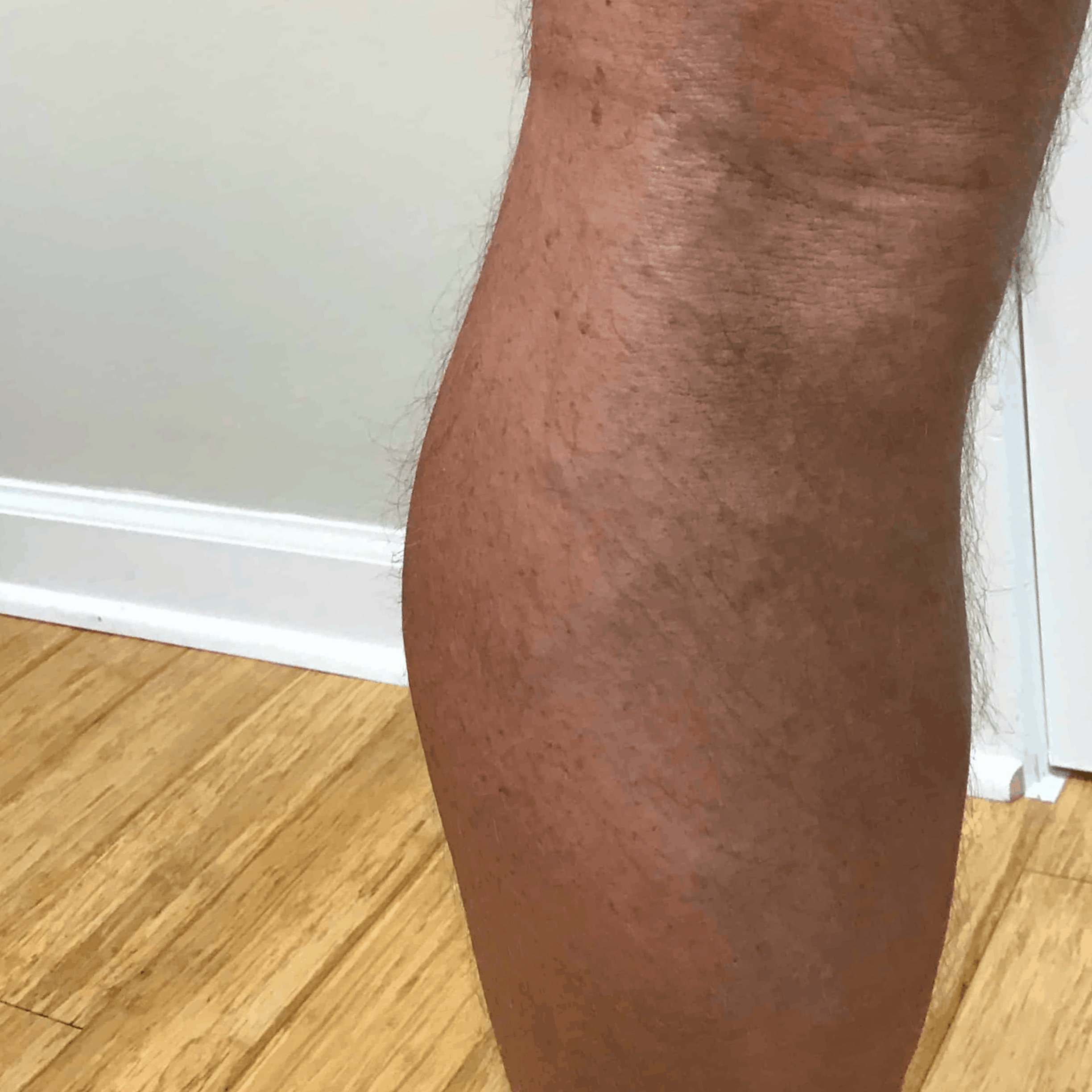
Do Varicose Veins Manifest Only in the Legs?
Varicose veins appear predominantly in the legs, but sometimes individuals can develop unsightly veins on the face that appear as tiny red lines and small veins. And some patients are bothered by bulging veins on their hands.
Anatomic variations can cause varicose veins. When a patient has valves in the veins that don’t close properly, it produces a backflow of blood moving in the wrong direction. This increases the pressure in the veins in the leg which can lead to varicose veins.
What Is the Difference Between Spider Veins and Varicose Veins?
“Varicose veins are usually the larger, bulging veins that are very visible on someone’s leg when they are standing,” says Dr. Kovacs. “Spider veins are smaller more superficial veins. They are blueish greenish in color, and appear on the surface of the skin.”
Treatment for Varicose Veins
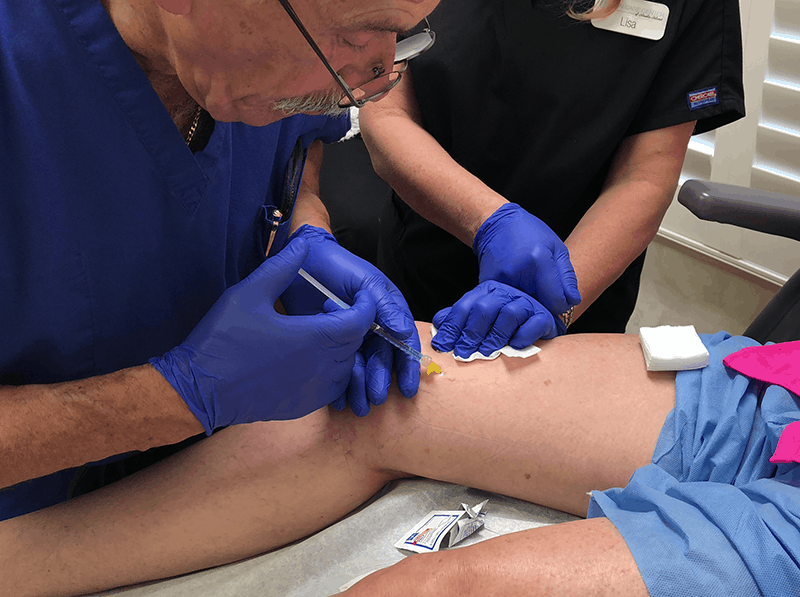
Dr. Kovacs performing a sclerotherapy treatment.
When a patient does not experience any adverse symptoms, and the sight of varicose veins do not bother them, medical intervention may not be necessary. Instead, a vascular surgeon may recommend specific lifestyle changes such as:
- Exercise
- Losing weight
- Not wearing tight-fitting clothing or high heeled shoes
When symptoms of pain, swelling or other complications occur, or a patient desires the removal of varicose veins for cosmetic reasons, medical treatment may be needed. Treatments include:
- Compression stockings – to prevent blood from pooling down in the legs.
- Ablation therapy – injection, radiofrequency or laser treatment to close or remove the veins.
- Sclerotherapy – may be recommended when a vein is twisted and more complicated in nature. Using ultrasound, a tiny 30-gauge needle is woven through the vein, and a sclerosing solution injected into the pathway causing the vein to spasm, clot, and disappear.
Treatments are typically done in the vascular surgeon’s office and are completed in about an hour. Sclerotherapy is often considered cosmetic by most insurance companies; therefore, coverage is not automatic. Patients should check with their insurance provider directly to confirm if they are covered.
Recovery and Prevention
Depending on the procedure, most patients can get back to their daily routine shortly after treatment, typically within a day or two. They may be advised to wear compression stockings to prevent fresh varicose veins from arising and also to reinforce the healing and recovery process.
Taking steps to improve the health of the legs can help limit varicose veins. These include:
- Controlling your weight
- Maintaining an active lifestyle
- Avoiding sitting or standing for more extended periods
- Keeping the legs raised above the heart when asleep
If you have any symptoms of varicose veins or are concerned about developing them, please contact us for an evaluation
